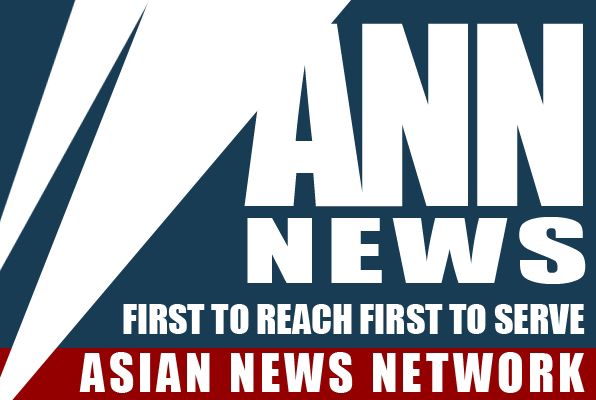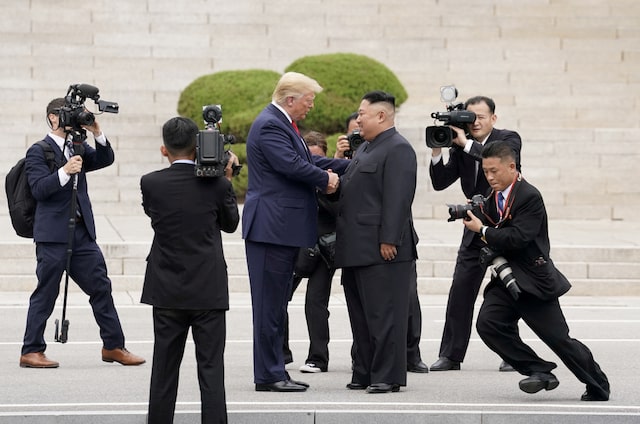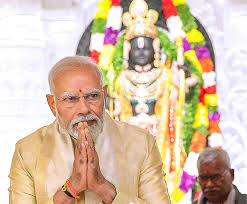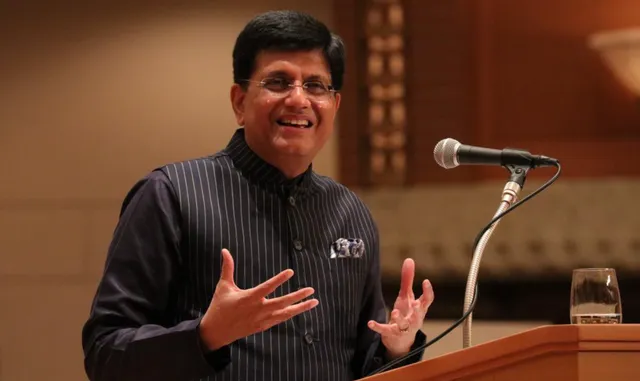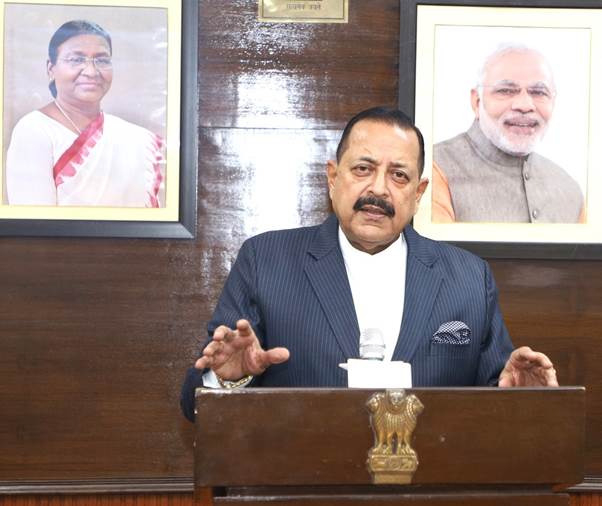U.S. President Donald Trump meets with North Korean leader Kim Jong Un at the demilitarized zone separating the two Koreas, in Panmunjom, South Korea, June 30, 2019. REUTERS
Summary
- Washington sees rising North Korea risks
- Trump’s first-term meetings with Kim yielded no concrete changes
- Kim ignored Biden’s offer of talks
WASHINGTON, Nov 26 (Reuters) – President-elect Donald Trump’s team is discussing pursuing direct talks with North Korean leader Kim Jong Un, hoping a fresh diplomatic push can lower the risks of armed conflict, according to two people familiar with the matter.
Several in Trump’s team now see a direct approach from Trump, to build on a relationship that already exists, as most likely to break the ice with Kim, years after the two traded insults and what Trump called “beautiful” letters in an unprecedented diplomatic effort during his first term in office, the people said.
The policy discussions are fluid and no final decisions have been made by the president-elect, the sources said.
Trump’s transition team did not respond to a request for comment.
What reciprocation Kim will offer Trump is unclear. The North Koreans ignored four years of outreach by U.S. President Joe Biden to start talks with no pre-conditions, and Kim is emboldened by, of an expanded missile arsenal and a much closer relationship with Russia.
“We have already gone as far as we can on negotiating with the United States,” Kim said last week in a speech at a Pyongyang military exhibition, according to state media.
During his 2017-2021 presidency, Trump held three meetings with Kim, in Singapore, Hanoi, and at the Korean border, the first time a sitting U.S. president had set foot in the country.
Their diplomacy yielded no concrete results, even as Trump described their talks as falling “in love.” The U.S. called for North Korea to abandon its nuclear weapons, while Kim demanded full sanctions relief, then issued new threats.
It was not clear what result a new diplomatic effort would yield. An initial Trump goal would be to reestablish basic engagement, but further policy aims or a precise timetable have not been set, the people said. According to one person briefed on the transition’s thinking, the issue may take a backseat to more pressing foreign policy concerns in the Middle East and Ukraine.
North Korean state media have not yet publicly mentioned the re-election of Trump, and Kim said this month that the United States was ramping up tension and provocations, raising the risks of nuclear war.
Trump and some of his allies left office with the impression that the direct approach was Washington’s best shot at influencing behavior north of the demilitarized zone, which has divided the Korean Peninsula for seven decades. The countries’ war was never technically ended even as the guns fell silent.
On Friday, Trump named one of the people who implemented that initial North Korea strategy, former State Department official Alex Wong, as his deputy national security adviser. “As Deputy Special Representative for North Korea, he helped negotiate my Summit with North Korean Leader, Kim Jong Un,” Trump said in a statement.
TENSIONS RISE
Trump inherits an increasingly tense situation with Kim when he returns to the White House in January, as he did in 2017, an atmosphere allies expect the incoming president to confront head-on.
“My experience with President Trump is he’s much more likely to be open to direct engagement,” said U.S. Senator Bill Hagerty, a Trump ally, in an interview with Reuters earlier this year. “I’m optimistic that we can see an improvement in the relationship and perhaps a different posture adopted by Kim Jong Un if that dialogue were reopened again.”
Washington has a dossier of concerns over the country’s expanding nuclear weapons and missile program, its increasingly hostile rhetoric to South Korea and its close collaboration with Russian President Vladimir Putin.
According to a U.S. official, these topics are expected to feature in Biden administration transition briefings for Trump aides. The Trump team has yet to sign transition agreements, which could limit the scope of some of these briefings.
The White House did not respond to a request for comment.
Particularly concerning to Washington are the prospects of increased sharing of nuclear or missile technology between Russia and North Korea and the deployment of thousands of North Korean troops to Russia to help in the war with Ukraine.
Reuters reported on Monday that North Korea is expanding a key weapons manufacturing complex that assembles a type of short-range missile used by Russia in Ukraine, citing researchers at a U.S.-based think tank who examined satellite images.
U.S. officials said those factors raise the risk of a conflict between multiple nuclear-armed nations in Europe or Asia, including the United States and its allies, which include South Korea and Japan.
American troops are deployed throughout the region to deter North Korea, and Trump has insisted that U.S. allies share more of the cost for those deployments.
In his final meeting with Chinese President Xi Jinping earlier this month in Peru, Biden asked for Beijing to use its leverage to reel in North Korea.
Opportunity for China and the U.S. to work together may be limited as Trump vows vast tariffs on Chinese goods and stacks his inner circle with China hardliners, such as Marco Rubio as secretary of state and Representative Mike Waltz as national security adviser.
Trump said last month the two countries would have had “a nuclear war with millions of people killed,” but that he had stopped it, thanks to his ties with the North’s leader.
Reporting by Trevor Hunnicutt; Editing by Heather Timmons and Alistair Bell
